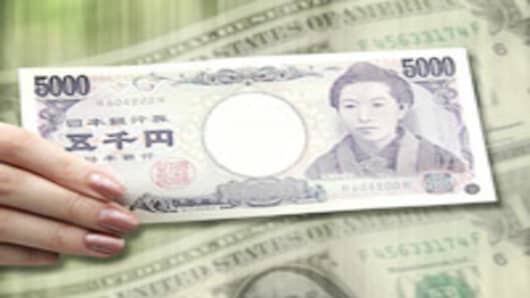The dollar slipped Tuesday, a day after its strongest rally against the euro in more than a year, as a recovery in global stock markets rekindled investors' appetite for riskier assets.
Expectations of weaker U.S. housing data this week, which could raise the chances of more Federal Reserve interest rate cuts this year, also weighed on the greenback.
Existing home sales figures will be released Wednesday and new homes sales Thursday. Although the housing data will not on their own prompt the central bank to ease, the prospect of problems in the wider economy will force the Fed's hand to promote growth.
"Today's market action boils down to carry trades. Yesterday we saw the reverse. With the return to firmer equity markets, investors are willing to take more risk and with that return to carry trades," said Matthew Strauss, senior currency strategist at RBC Capital Markets in Toronto.
In carry trades, traders buy securities in a high-yielding currency funded by borrowing in a low-yielding currency such as the yen.
In early afternoon New York trade, the euro was up 0.5 percent against the dollar at $1.4248.
The British pound gained 0.9 percent to $2.0491 and the dollar was down 0.3 percent against the Swiss franc at 1.1734.
The dollar index, which measures its value against a basket of six major currencies, was down 0.6 percent at 77.612 but up from a record low of 77.093 touched Monday.
Firmer equity markets prompted some investors to move back into carry trades, hitting the yen and boosting high-yielding currencies such as the Australian, New Zealand and Canadian dollars.
"U.S. equities recovered yesterday, which has led to a slight return to risk appetite and carry plays," said Geoff Kendrick, currency strategist at Westpac. "But the market is flip-flopping and the story could turn around as easily today as it did yesterday."
The dollar rose 0.3 percent to 114.76 yen , above Monday's six-week low at 113.23 yen, according to Reuters data.
The euro was up 0.8 percent at 163.52 yen, its biggest one-day percentage gain in a month.
U.S. interest rate futures are pricing in a roughly 82 percent chance of a 25-basis-point cut, to 4.50 percent, at next Wednesday's Fed policy meeting.
"The Fed wants to see a strong consumer over Christmas and that will be the driver for them to cut rates," said Mark Meadows, currency strategist at Tempus Consulting in Washington.
The high-yielding Australian dollar and New Zealand dollar gained just over 1 percent against the U.S. unit.
The Canadian dollar touched a 33-year high against the U.S. dollar after Canadian retail sales data for August beat expectations.


